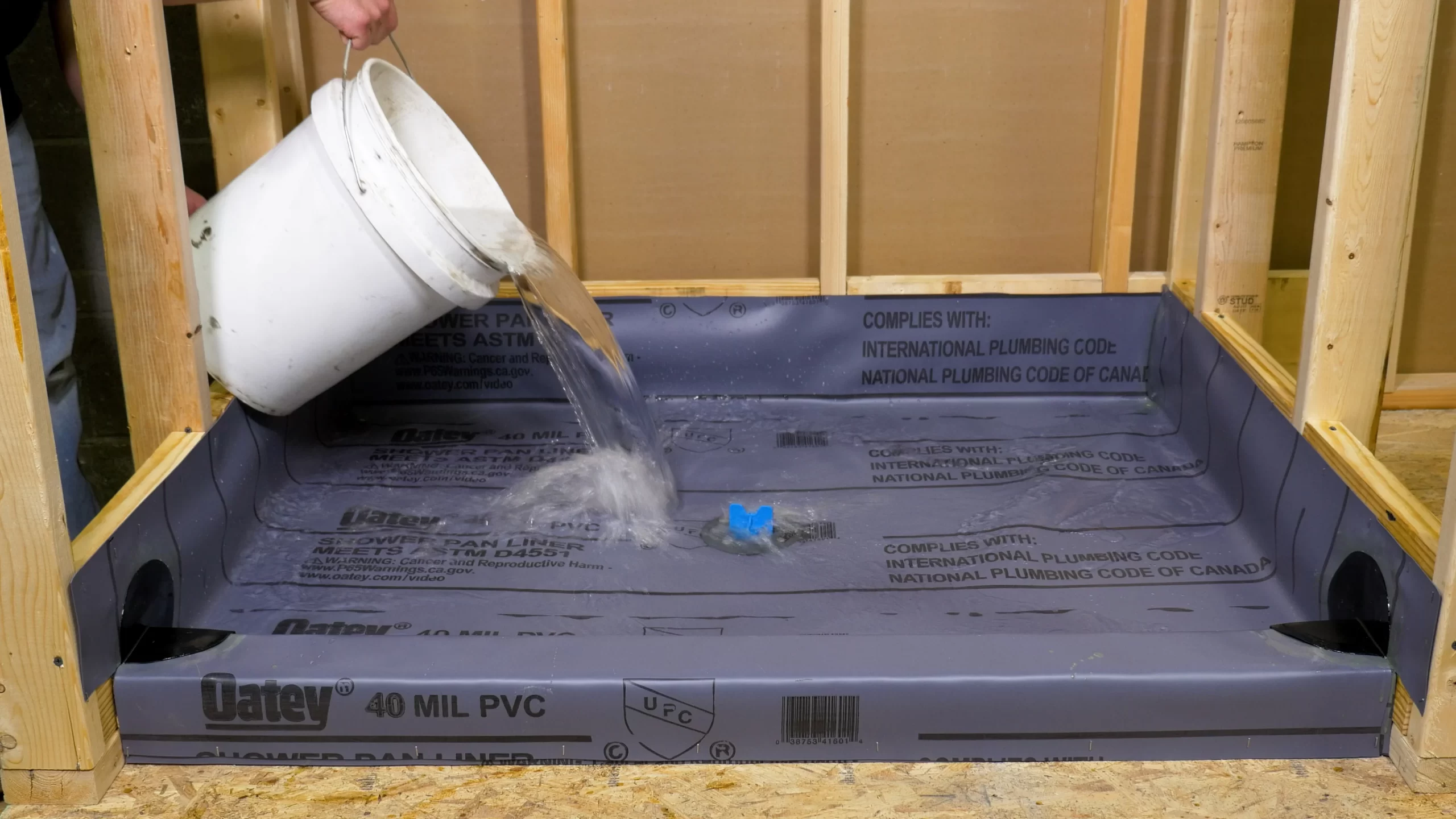
How to Install a Shower Pan Liner: A Step-by-Step Guide
A properly installed shower pan liner is crucial to prevent water leaks and protect your bathroom from water damage. Whether you’re renovating your bathroom or building a new one, understanding how to install a shower pan liner is a valuable skill. In this comprehensive guide, we’ll walk you through the step-by-step process, share essential tips, and answer ten frequently asked questions to ensure your shower remains watertight and functional for years to come.
1. Understanding the Importance of a Shower Pan Liner
Preventing Water Damage
A shower pan liner is a waterproof barrier that ensures water from your shower remains contained within the shower area. Without a properly installed liner, water can seep into the subfloor and walls, causing structural damage, mold growth, and costly repairs.
Complying with Building Codes
Many building codes require the installation of a shower pan liner to meet waterproofing and safety standards. Failing to adhere to these codes can result in construction violations and delays.
Ensuring Longevity
A well-installed shower pan liner prolongs the life of your shower and bathroom. It prevents moisture-related issues that can lead to expensive repairs and renovations down the line.
2. Gathering the Necessary Tools and Materials
Tools You’ll Need
- Utility knife
- Measuring tape
- Screwdriver
- Trowel
- Bucket
- Paintbrush
- Spirit level
- Safety glasses
- Gloves
- Mask
Materials You’ll Require
- Shower pan liner (PVC or CPE)
- Adhesive (waterproof)
- Nails or screws
- Pre-sloped shower pan or mortar mix
- Drain assembly
- Gravel or pea gravel
- Tile backer board
- Thinset mortar
- Tile spacers
- Tiles
- Grout
- Tile sealer
3. Preparing the Subfloor
Subfloor Inspection
Examine the subfloor for any damage, rot, or unevenness. Repair or replace damaged areas and ensure the subfloor is level and clean.
Leveling and Cleaning
Use a spirit level to check for any slopes in the subfloor, and correct them as needed. Ensure the subfloor is free of debris and dust before proceeding with installation.
4. Installing the Shower Pan Liner
Laying the Liner
Unroll the shower pan liner and lay it over the subfloor, extending it up the walls by a few inches. Trim the excess liner using a utility knife, leaving enough material to cover the walls and curb.
Securing the Liner
Attach the liner to the subfloor using waterproof adhesive, nails, or screws, depending on your liner type and subfloor material. Be sure to secure the liner around the drain opening.
Sealing Joints and Corners
Use waterproofing sealant to seal all joints, corners, and seams of the liner. Pay special attention to the corners where the walls meet the floor and around the drain.
5. Constructing the Curb and Drain
Building the Curb
Build a sturdy curb along the entrance to the shower using 2x4s or concrete blocks. Ensure it is level and sloped slightly inward for proper drainage.
Installing the Drain Assembly
Assemble and install the shower drain according to the manufacturer’s instructions. Ensure it is flush with the subfloor and securely attached to the shower pan liner.
Creating Slope for Proper Drainage
To ensure water drains properly, create a gentle slope in the mortar bed or use a pre-sloped shower pan. The slope should lead toward the drain assembly.
6. Testing for Leaks and Inspecting the Installation
Conducting a Water Test
Fill the shower pan with water to check for leaks. Allow the water to sit for at least 24 hours, monitoring for any signs of moisture or leaks in the surrounding area.
Inspecting for Flaws
Thoroughly inspect the entire installation, including the liner, curb, drain, and waterproofing. Address any flaws or areas of concern before proceeding with tiling.
7. Tiling Over the Shower Pan Liner
Preparing for Tile Installation
Install tile backer board over the shower pan liner using screws and apply a waterproofing membrane over the backer board to ensure a watertight seal.
Applying Thinset and Setting Tiles
Mix thinset mortar according to the manufacturer’s instructions and apply it to the backer board using a trowel. Set your tiles in the thinset, using tile spacers to maintain proper spacing.
8. Grouting and Sealing
Grouting the Tile
Once the tile adhesive has dried, apply grout between the tiles. Ensure all gaps are filled, and wipe away excess grout with a damp sponge.
Sealing the Grout
After the grout has cured, apply a quality grout sealer to protect against moisture penetration and staining. Follow the manufacturer’s recommendations for application.
9. Common Shower Pan Liner Installation Issues and Solutions
Leaks and Drain Problems
If you discover leaks during the water test or encounter drainage issues, it may be necessary to inspect and repair the drain assembly or liner sealing.
Liner Damage and Repair
If the shower pan liner becomes damaged during installation, promptly patch or replace the affected area to maintain its integrity.
FAQs: Your Shower Pan Liner Installation Questions Answered
1. What is a shower pan liner, and why is it important?
A shower pan liner is a waterproof barrier installed beneath the tile and mortar bed to prevent water from penetrating the subfloor and causing damage.
2. What tools do I need for installing a shower pan liner?
Essential tools include a utility knife, measuring tape, trowel, spirit level, and safety gear such as gloves and safety glasses.
3. Can I install a shower pan liner on a wooden subfloor?
Yes, you can install a shower pan liner on a wooden subfloor, but ensure the subfloor is in good condition, level, and adequately supported.
4. What materials are suitable for a shower pan liner?
PVC and CPE (Chlorinated Polyethylene) are common materials for shower pan liners, with PVC being a popular choice due to its durability.
5. How do I ensure my shower pan liner is properly sloped for drainage?
Create a slope using a pre-sloped shower pan or by building a mortar bed with a slight slope toward the drain.
6. Should I use a PVC or CPE shower pan liner?
PVC is often preferred for its durability, ease of installation, and compatibility with various subfloor materials.
7. How can I test my shower pan liner for leaks?
Fill the shower pan with water and monitor for leaks or moisture around the liner, curb, and drain over a 24-hour period.
8. Can I install tiles directly over the shower pan liner?
No, tiles should be installed over a tile backer board applied to the shower pan liner to provide a suitable surface for tile adhesion.
9. Is it necessary to seal the grout in a shower pan installation?
Yes, sealing grout is essential to prevent moisture infiltration, staining, and deterioration.
Conclusion
Installing a shower pan liner is a critical step in creating a durable and waterproof shower that will stand the test of time. By following the steps outlined in this guide and paying attention to common pitfalls, you can confidently complete your shower pan liner installation project. Remember to consult building codes, manufacturer guidelines, and seek professional assistance when needed to ensure a successful and watertight installation that provides years of reliable service in your bathroom.


